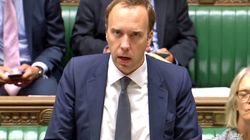
The new Secretary of State for Health and Social Care, Matt Hancock, is coming into the NHS at a crucial time – its funds are short and its needs for innovation are great.
Here are five things he needs to do to tackle health issues in the North of England:
1.Recognise the geographical divide in life expectancy and health outcomes in England and adopt policies to tackle the widening gap between the North and the South
The North of England is challenged by deep-rooted, but relatively recent, inequalities in health compared with other regions of the UK.
Research published in the British Medical Journal shows a 20% higher premature death rate for those living in the North across all age groups. This is 1,173,360 Northerners dying earlier than if they had experienced the same life chances as those in the South over the last 50 years.
Life expectancy declines from north to south with every government office region showing significantly more early deaths the further north the region sits.
Since 1995, the gap has been widening: excess mortality for the 25–34 age group increased from 2% in 1995 to 29% in 2015, while for those aged 35–44, northern excess mortality increased sharply: from 3% to 49%. In this period, southern mortality mainly declined.
This health divide needs effective policies, including a rebalancing of the economy between North and South England, proportionate to the scale of the problem.
2. Make sure the North receives the right proportion of public research and development funding.
There is a link between the investment in health research and health outcomes of an area. Public funding leads to local health and wealth benefits including new ways of diagnosing, managing and treating disease.
Despite the potential of the North in health innovation, it has been underinvested in clinical and healthcare research compared both to other regions and the private sector (which invests 20% of all funds in the region).
The North received only 13.6% of funding across the UK in 2014 and in the recent National Institute of Healthcare Research Biomedical Research Centres funding allocation of £816million, 6.7% of the total funding went to the North, while 83% was secured by the Golden Triangle.
With the link between the wealth of a particular area as a driver of improved health outcomes, a new approach to investment is needed focusing on rebalancing the wider economy to drive investment in the North’s economy.
A healthier workforce in the North will also contribute to closing the productivity gap of £4 per person between the North and South of England and in growing the region’s GDP rate to the UK average, which could unlock 850,000 jobs by 2050. Improved prosperity in the North will drive further improvements in the region’s population health.
3. Commit to improving the digital capabilities of the NHS, working with existing organisations such as Connected Health Cities.
The North of England’s excellence in data-intensive health sciences is world-leading and can play a major part in improving health outcomes.
Improving the digital capabilities and data analytics of the NHS can improve health research and the delivery of services to improve health. This includes using health data to understand the picture of regional public health which can support the right initiatives.
Given £20million in the 2015 Spending Review, Health North: Connected Health Cities (CHC) is an initiative that was developed in 2015 by the NHSA.
The programme brings together health and social care pilot projects across the North to help share information to improve population health and well-being.
These pilot projects are looking at; helping to gain a better understanding of childhood obesity, stroke and alcohol misuse, helping to redesign care pathways and reducing the burden on local A&E services.
In the North East, the CHC-project Great North Care Record has signed up 100% of GP practices in North East and is seen as a prototype for national patient data analytics schemes.
4. Support delivering the proposed Crossrail of the North and statutory funding powers for Transport for the North.
Putting money into infrastructure means people can underpins accessibility to services and successful modern enterprise, which is critical to improving the health and wealth of the North.
The region has the potential to become a mega-cluster in a number of sectors, including healthcare. But, this requires an environment in which it is possible to conduct high risk work in a low risk environment. Building a critical mass of expertise and realising economic potential hinges on free movement of people and connected cities in the region.
5. Back the Life Sciences Industrial Strategy and commit to setting up a northern fund to help improve the flow of money into health research.
Life Sciences Industrial Strategy offers the opportunity for the North to become healthier and wealthier. If he uses organisations such as the NHSA who know the local strengths and opportunities he can deliver the strategy to where it’s needed – and make sure opportunities aren’t missed.
A northern investment fund is needed. The North produces the same number of life science patents as London but does not have access to the same commercial growth capital to make the most of these inventions for the benefit of patients and the wider economy.


